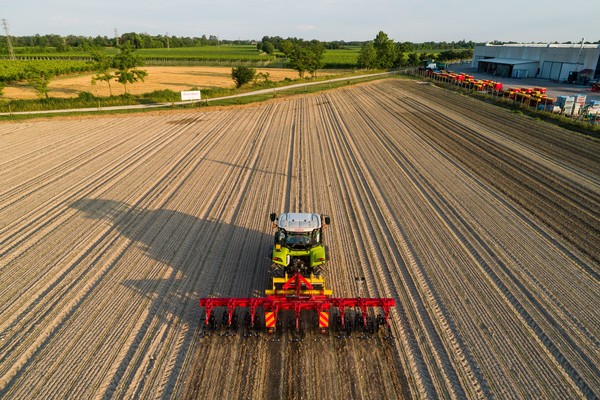
Matermacc seeders tested on the field
Information digitization, organic farming and precision farming. These were the topics central to the Matermacc 2023 Campus held last July in the Friulian countryside of San Vito al Tagliamento (Pordenone) in front of an audience of specialized journalists, farmers, customers and Matermacc employees. Promoted by the Friuli-based company with a long tradition in manufacturing seeding and tillage equipment, the demonstration event was run two years after the last edition, dated 2021. The organizers planned several new features for Campus 2023, starting with the trial fields. The grounds, spread over five hectares near the Matermacc production facilities, were, in fact, divided into four distinct zones, each specially prepared for a specific type of processing. Field N-W, with no preparation, featured a Matermacc vehicle for direct seeding, while Field N-E and Field S-E involved - respectively - conventional technology and minimum tillage equipment. The fourth and final plot, Field S-W, was prepared in corn and was entrusted to a machine dedicated to this very type of cultivation. The following is a detailed breakdown of the machinery used on each individual test field.
Northwest Field with no preparation. The MS 9100 FF precision seed drill, presented in its final version at the last edition of EIMA International, was used in this field. Designed for minimum tillage operations at high seeding rates or no-till tillage in direct seeding, the MS 9100 FF model was tested on an area consisting of a first portion that was very stony and a second portion with barley chop, which allowed the ability of the MS 9100 FF to evaluate its ability to handle residues. The Matermacc model stood out for working speed and seeding quality in both cases.
Northeast field prepared with conventional technique. The star performer was the MS 8230 8-row precision seed drill combined with the Sva Elektro front hopper. The configuration seen at the Campus," the manufacturer explains in a note, "achieves a seeding speed of 12 km/h with a high quality of tillage, while the MiPlus EVA system, recently awarded at EIMA International as Technical Innovation, allows monitoring seeding operations in real-time and row by row. Thanks to this technology," the Matermacc note also says, "it is possible to control both the seeder and the pneumatic hopper using a single tablet. Moreover, the operator can set -again from the tablet- the preferred working mode, switching, for example, from seeding to fertilizing.
Southeast field in minimum tillage. Here, the MSD ELEKTRO grain seeder with 4-section Section Control was used, appreciated for its working speed (between 13 and 15 km/h), productivity (about 70 hectares per day) and low operating costs. MSD ELEKTRO is equipped with 4 metering units and 4 distribution heads, which ensure homogeneous working and particular responsiveness in section control.
Southwest field sown with corn. On this test field, the UNICA PVI performed its debut. It is a hydraulic folding weeder with an 8-row configuration at 75 cm and an automatic guidance system expressly designed for the needs of Organic. In this area of organic crops, Matermacc points out, weeders are finding more and more space for mechanical weeding, which, as is well known, does not involve the use of chemicals and is, therefore, highly environmentally sustainable. The automatic guidance technology developed by the Friuli-based company, which is still at the prototype stage, can be applied to all weeder models, from fixed-frame to hydraulic folding weeders, and is compatible with operating speeds of between 8 and 14 kilometers per hour.
Giovanni M. Losavio








